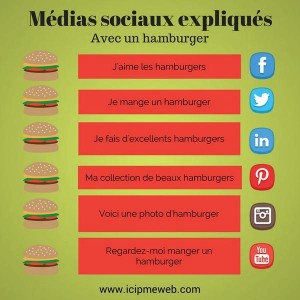 One of the first units I created when I set aside my textbook in favor of authentic materials was on the topic of vacations. I’ve learned a lot in the year since that time, so I decided to revise that unit to reflect my new understandings. This packet (2015 Vacation) includes the following lessons:
One of the first units I created when I set aside my textbook in favor of authentic materials was on the topic of vacations. I’ve learned a lot in the year since that time, so I decided to revise that unit to reflect my new understandings. This packet (2015 Vacation) includes the following lessons:
Lesson 1 The first lesson in this year’s version incorporates one of the same infographics that I used last year. However, this time I created French rather than English questions for the supporting details in the interpretive task. Due to the simplicity of the text, the students I am confident that the students will not have any difficulty providing the correct responses. Using French in the questions allows me to model correct past tense conjugations which will then be repeated orally when we go over this activity in class. These same verb forms will then be used in the interpersonal and presentational tasks.
Lesson 2 The interpretive tasks in the second lesson comes from a Trotro cartoon, which was also included in last year’s unit. This time, however, I created an interpersonal and presentational task to accompany the cartoon. In the interpersonal task the students will discuss images from the video in order to co-create a summary. Although I have included the pictures in the packet, I prepared an alternate activity (trotro pair) which would require more significant negotiation of meaning. The students will use these same pictures to guide an oral and/or written summary of the video. Both the interpersonal and presentational activities provide opportunities for students to continue developing their ability to discuss past events, an important step in increasing their proficiency.
Lesson 3 In this lesson the students will interpret a quiz provided by an RV rental company. I think this will be a high- interest text, because teenagers naturally enjoy taking quizzes like this. For the interpersonal task, the students will predict their partner’s responses to the quiz questions, and then interview this same partner in order to verify whether the predictions were correct. It is my intention that incorporating the present tense here will help avoid the students’ overgeneralization of these forms. The students will, however, use the past tense to present (orally and/or in writing) their own ideal vacations, giving the types of information that was targeted in the quiz.
Lesson 4 The students will interpret another cartoon video in this lesson—Le Petit Ours Brun. Screenshots are again provided in order to support the interpersonal and presentational tasks. Here is an A/B activity (pob pair) which will require greater negotiation of meaning.
Lesson 5 In this lesson I have re-used an infographic from last year’s lesson. The value of this particular text is that it introduces a variety of vacation activities. Due to the nature of the infographic, I could not authentically integrate the passé composé in the interpersonal task. I did, however, use the incorporate the imperfect of vouloir. I believe this is a good way to implicitly introduce this verb form, which could be used in later tasks. The corresponding interpersonal activity is a highly scaffolded interview (repeated from last year’s unit) which provides the students with the opportunity to see and use a variety of verbs in the passé composé in a communicative context. The presentation tasks require the students to describe a miserable vacation. I think the students will enjoy the creativity of this task, which I may assign as a Discussion (blog) on Canvas, our learning management system.
Lesson 6 In this final lesson, the students will watch a Peppa Pig video and then summarize it, first with a partner and then as a presentational speaking and/or writing task. Due to the number of images included, I think the A/B tasks would be overwhelming for the students. However, I may create an opportunity for more negotiation of meaning by copying the pictures on cardstock, cutting them apart, and then having each student take half of the stack. They could then discuss the picture cards in order to put the story in order, using the manipulatives.
I’m anticipating that each of these lessons will take from 2-3 days, depending on whether I assign both the speaking and writing presentational tasks for each lesson, whether the writings are completed in class or as homework, whether I have the students work individually on the videos or we listen to them as a class, etc. As has been my practice, I will most likely assign the preparation of the speaking presentations as homework, and then randomly choose a few students to present for a formative assessment. In a later post I’ll share the IPA that I will use as the summative assessment for this unit.




